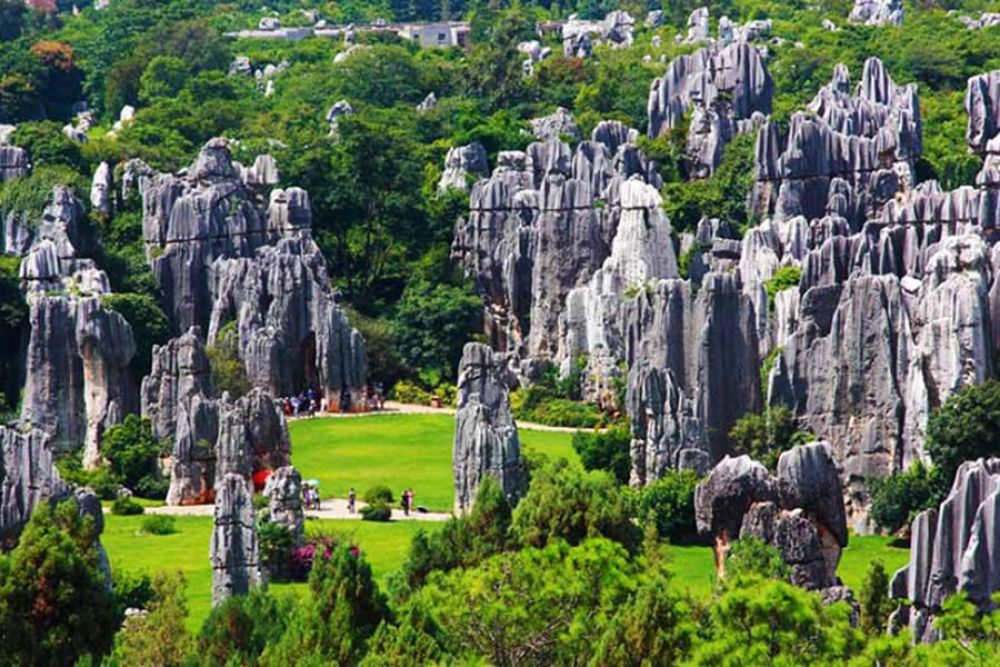

Located in the majestic town of Sapa in Lao Cai Province, Vietnam, Ham Rong Mountain stands as a testament to the natural beauty and cultural richness of the region. The name 'Ham Rong', which translates to 'Dragon’s Jaw' in Vietnamese, is derived from the mountain’s unique shape that resembles the head of a dragon as viewed from the town. Over the years, Ham Rong Mountain has become a symbol of Sapa and is one of the prime attractions for tourists seeking to explore the allure of the highlands.
Tourism in Sapa, and at Ham Rong Mountain specifically, has a storied past that traces back to the colonial era when the French discovered the town in the early 20th century. The French, entranced by the moderate climate and natural beauty of Sapa, began developing it as a hill station. Over time, Ham Rong Mountain emerged as a favorite spot among the French colonists for its panoramic views of Sapa and the surrounding valleys.
Post-Vietnam War, Sapa and its surrounding attractions faced a period of dormancy in terms of tourism. However, as Vietnam opened its doors to the world in the 1990s, Sapa was rediscovered by travelers, and its tourism industry started to flourish. Ham Rong Mountain, with its accessible location and striking beauty, quickly gained popularity among the new wave of adventurers, nature enthusiasts, and cultural explorers.
The local authorities, recognizing the potential of tourism, developed Ham Rong Mountain Ecological Tourist Area to create a more structured tourism experience. This included the cultivation of gardens, the construction of traditional ethnic houses, and the establishment of performance spaces to showcase local cultural activities.
Visitors to Ham Rong can trek along the stone paths that wind through the mountainside gardens adorned with a variety of flora. The Mountain harbors cultural significance for the local ethnic groups, particularly the H'Mong and Dao communities. Tourists are treated to performances such as traditional dances and folk music, which reflect the rich cultural tapestry of the region.
At the peak, which stands over 1,800 meters above sea level, tourists are rewarded with a breathtaking vista of Sapa, the Muong Hoa Valley, and the famed Fansipan Mountain, often referred to as the "Roof of Indochina."
In recent years, Sapa and Ham Rong Mountain have seen a shift towards sustainable and eco-friendly tourism. The local and national governments, as well as tourism businesses, are increasingly focusing on practices that help conserve the natural beauty and cultural heritage of the area.
Another trend at Ham Rong Mountain is the growing popularity of photography tourism. The picturesque landscapes and vibrant culture provide ample opportunities for both amateur and professional photographers to capture stunning visuals of Vietnam's northern highlands.
Additionally, the advent of social media has led to an increase in younger travelers being drawn to the site, eager to share their experiences on platforms like Instagram and TikTok. This has encouraged local stakeholders to establish more Instagram-worthy spots and experiences, further positioning Ham Rong Mountain as a must-visit destination in Vietnam.
Ham Rong Mountain remains an integral piece of Sapa's vibrant tourism scene and continues to draw visitors with its sublime natural beauty and cultural festivities. Its history and evolution as a tourist hotspot mirrors the broader development of Vietnam as a premier destination for travelers from around the globe.